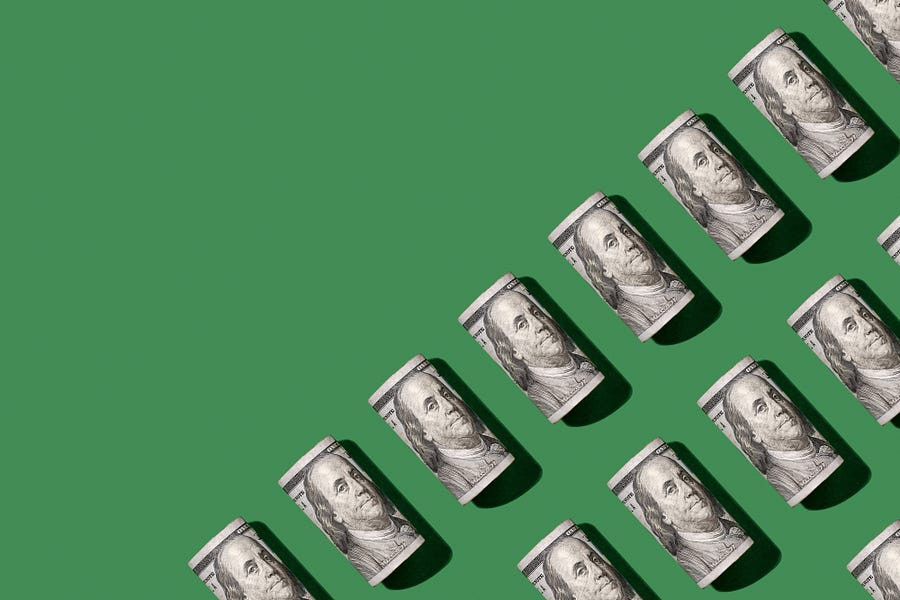The euro/dollar pair continues its recovery—at the start of the new trading week, EUR/USD buyers tested the 1.1400 level (for the first time since late April), driven by overall weakness in the U.S. dollar. At the same time, Monday's economic calendar is nearly empty, and U.S. markets are closed for Memorial Day. The only scheduled events include speeches by ECB President Christine Lagarde and Bundesbank President Joachim Nagel. As a result, the dollar is weakening (and EUR/USD is rising) due to momentum from Friday's trading session. The "negotiation track" continues to weigh on the U.S. currency despite a mixed informational backdrop.
On Friday, Donald Trump threatened to impose 50% tariffs on European goods starting June 1, complaining that trade negotiations between the U.S. and the EU "aren't going anywhere" and calling the EU "a very difficult negotiation partner."
This unexpected development hit the greenback hard— the U.S. dollar index fell sharply into the 99 range, while EUR/USD settled firmly within the 1.13 zone. Today, the dollar remains under pressure, and EUR/USD buyers continue to climb higher, despite Trump softening his stance. Following a conversation with European Commission President Ursula von der Leyen, Trump postponed the 50% tariffs until July 9, stating that the EC President assured him that "negotiations would begin quickly."
It's unclear what Trump meant exactly, as trade talks between Washington and Brussels actually began back in mid-April. Meanwhile, EU Trade Commissioner Maros Sefcovic responded to Trump's threats by asserting that the EU is "capable of defending its interests," hinting at possible countermeasures.
Still, the fact remains: the U.S. President delayed the tariffs, which sparked renewed interest in risk assets. The euro benefited from this, while the greenback remained under pressure—today the dollar index dropped into the 98 range, marking a five-week low.
EUR/USD buyers were further supported by Trump's comment that the so-called OBPB ("One Big Beautiful Bill") would undergo significant changes in the Senate. This controversial bill extends temporary tax cuts (introduced during Trump's first term), increases defense and immigration enforcement spending, reduces popular social (healthcare) programs, and introduces new tax benefits. Last week, the bill narrowly passed in the House (215 votes in favor, 214 against) and is now heading to the Senate, where Republican infighting is expected to intensify. Trump therefore suggested the bill may be significantly amended and sent back to the House.
This 1,000-page proposal poses considerable risks to the U.S. economy, which is why markets reacted positively to news that it may be substantially revised—adding to the market's appetite for risk.
However, despite the upbeat start to the week, EUR/USD buyers failed to hold above the interim resistance at 1.1410 (the upper Bollinger Band on the 4H chart). Traders will need additional news-driven momentum to break into the 1.14 range and aim for higher price levels. Otherwise, the pair risks getting stuck again in the 1.1300–1.1400 range.
This week brings plenty of potential catalysts: on Tuesday, the U.S. consumer confidence index will be released; on Wednesday, the Fed's May meeting minutes; Thursday brings the second estimate of U.S. Q1 GDP; and Friday features the Core PCE Price Index.
Technical Perspective: On the D1 timeframe, EUR/USD is positioned between the midline and upper line of the Bollinger Bands and above all Ichimoku indicator lines, which have formed a bullish "Line Parade" signal. A similar setup is present on the W1 timeframe, indicating a preference for long positions.
The first bullish target is 1.1450 (the upper Bollinger Band on the daily chart). The primary target remains 1.1570 (the upper Bollinger Band on the weekly chart), although it's too early to aim for this level. For this to happen, EUR/USD buyers must secure a hold above the 1.1450 resistance level and, more importantly, above the psychologically significant 1.1500 level.
Overall, bullish sentiment prevails for the pair—weakness in the U.S. dollar is pushing EUR/USD higher, while corrective pullbacks are offering opportunities to enter long positions at better prices. That said, it is advisable to open long positions only after buyers have at least overcome the intermediate resistance level at 1.1410 (the upper Bollinger Band on the H4 chart).












